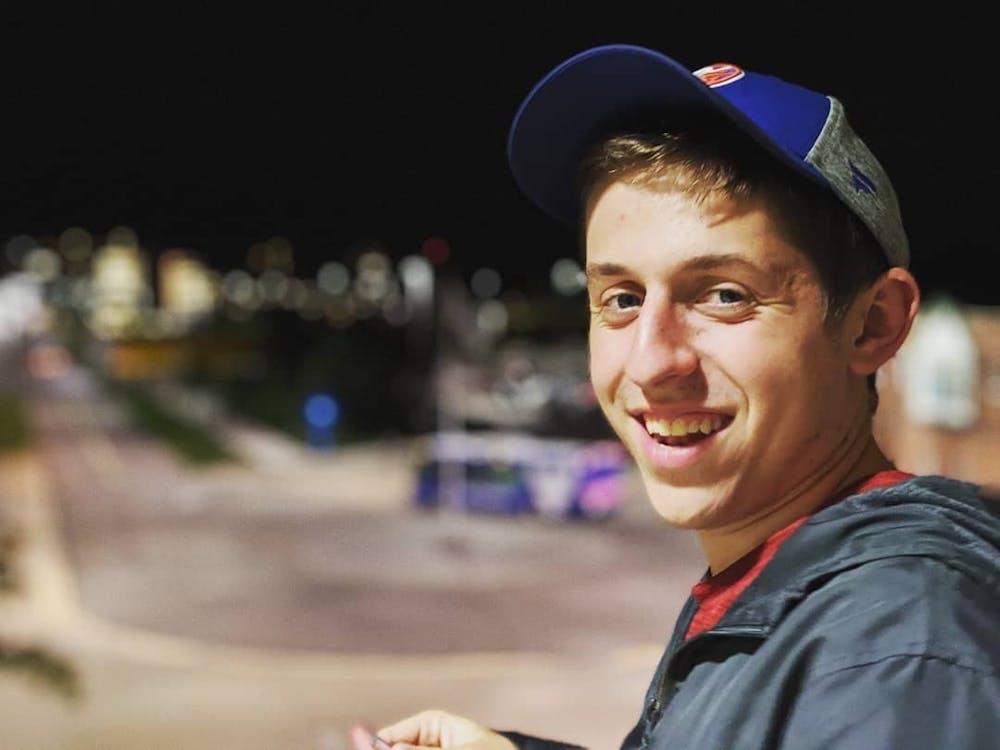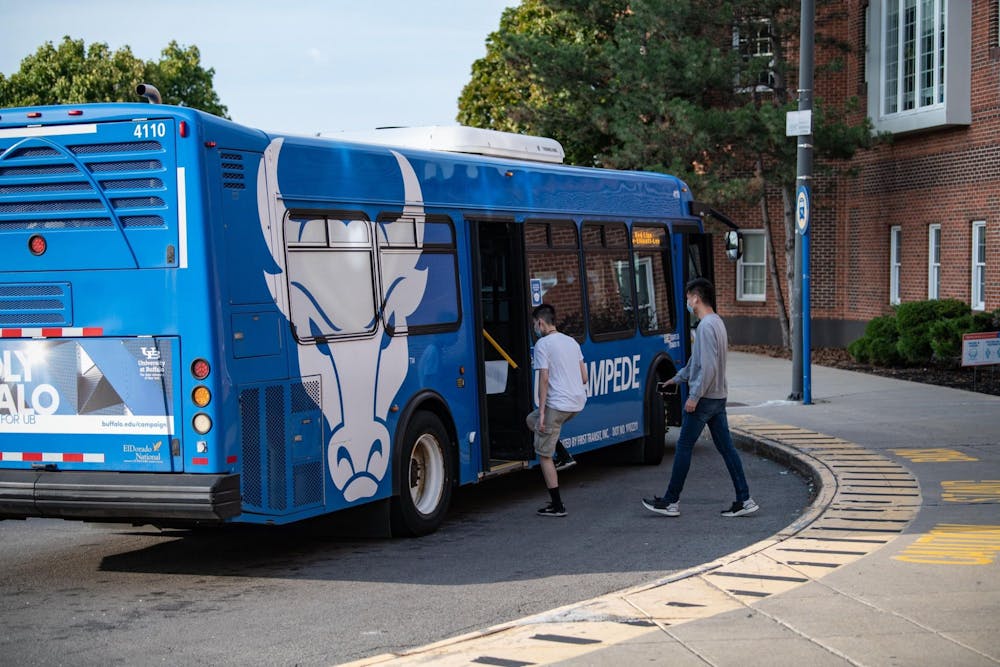UB is on a collision course with remote learning.
Two days after campus reopened for the fall semester, the school already reported 46 cases of COVID-19. Those tests came from county tests and the number is expected to rise in coming days, as UB begins its own surveillance testing and students continue to mingle with their peers.
The latest infection totals — 43 students living off-campus, one student living on-campus and two employees — have students alarmed that if things don’t change quickly, UB may be shut down by the state for two weeks or possibly the rest of the semester.
On Aug. 27, Gov. Andrew Cuomo announced that colleges will be forced to go remote if they experience “100 COVID cases or an outbreak of equal to 5% of its population.” Even with a 37% reduction in on-campus housing, UB still has 4,817 students living in the residence halls or apartments and plenty more living adjacent to campus.
Students said they aren’t surprised UB finds itself in this situation, although there is some disagreement on the cause for the spike.
Jacob Klieger, a senior communication major, called UB’s reopening plan a “charade.” He said that it was assured that UB would face a spike in cases at some point, but that he didn’t expect it to occur so soon after reopening.
“It was inevitable even before classes started,” Klieger said. “I knew that in-person classes were unsustainable in this environment, I just didn’t expect the infection rate to be this high. Two days in and we’re at 46 cases. I was expecting class to last at least three weeks. It’s looking like we’re on track for only one week given the current infection rate.”
Jeremy Elmkies, a junior communication major, said that students could be doing a better job of heeding UB’s health and safety guidelines. He said that the rising infection rate in Western New York is evidence that students need to be scrupulous and not let their guard down.
“I think that this was an inevitability because we are not as ‘out of the woods’ in New York as we would like to hope,” Elmkies said. “Yet, at the same time I don’t know if UB, or even Gov. Cuomo, is as to blame as the kids partying and violating social distancing are.”
On Wednesday, UB released a statement saying that the vast majority of cases are concentrated in the University Heights, where many social fraternities and sororities are located. According to the statement, UB is working with the Buffalo Police Department to address issues, “including large parties, involving students living in off-campus housing in the University Heights neighborhood.”
In an email to the university community, UB President Satish Tripathi urged students to take the necessary precautions to protect themselves and the people around them.
“Remember, these are not ordinary times,” Tripathi wrote. “Because of the global public health crisis, we have embarked on a semester that is unprecedented in our university’s history. Any inconvenience these guidelines may pose is eclipsed by our greater responsibility — as members of an educated, scholarly community — to mitigate the spread of COVID-19.”
Haven Nguyen, a junior media study major, also expected the rapid rise in infection rates.
“I think there’s a high chance UB will have to go remote with this infection rate,” Nguyen said. “Recalling students from all over the place to campus is already a high-risk decision. It’s difficult to track who went where, did what [and] interacted with whom, not to mention UB is trusting people to follow all instructions and report this information voluntarily.”
UB notably did not test students returning to campus for COVID-19. But on Tuesday, in response to mounting pressure from the university community, the school announced it would begin random surveillance testing with self-administered saliva tests.The tests remain voluntary.
Meanwhile, Erie County is also experiencing a jump in cases. On Aug. 27, Cuomo deployed a testing SWAT team to Western New York, after the region reported the highest infection rate in the state. Since then, Erie County Executive Mark Poloncarz has threatened an indefinite ban on fans at Bills games and warned of another shutdown.
Students are concerned about a switch to remote learning for a number of reasons, not least because it will make certain classes particularly difficult to complete.
Jake Barkan, a senior architecture major, said he is “dreading” a potential change because his classes are intended to be taught in-person.
“Architecture in particular is difficult because it’s very collaborative,” Barkan said. “We work in studios, we build and draw together. So we [will] all feel kind of frustrated if we can’t gather on campus.”
Eleanor Byrne, a junior geology major, said she benefits greatly from in-person classes and stressed that it would be quite difficult for her if UB was forced to switch to remote learning.
“I am fortunate to have some of my classes in-person plus the labs,” Byrne said. “This is very helpful since the professor is right there when I need to ask a question. However, if it becomes remote it will be harder to contact the professor and with some of my labs — like Earth Materials — it’s all about hands-on experience. Having all my courses remote would be extremely difficult.”
Justin Weiss is the senior features editor and can be reached at justin.weiss@ubspectrum.com

Justin Weiss is The Spectrum's managing editor. In his free time, he can be found hiking, playing baseball or throwing things at his TV when his sports teams aren't winning. His words have appeared in Elite Sports New York and the Long Island Herald. He can be found on Twitter @Jwmlb1.





